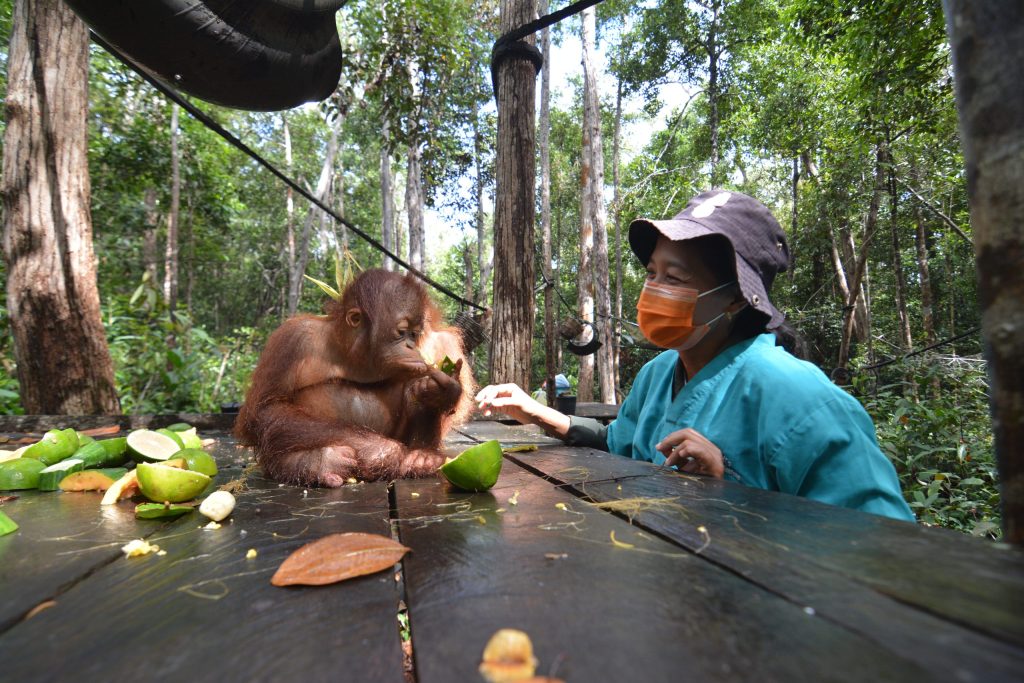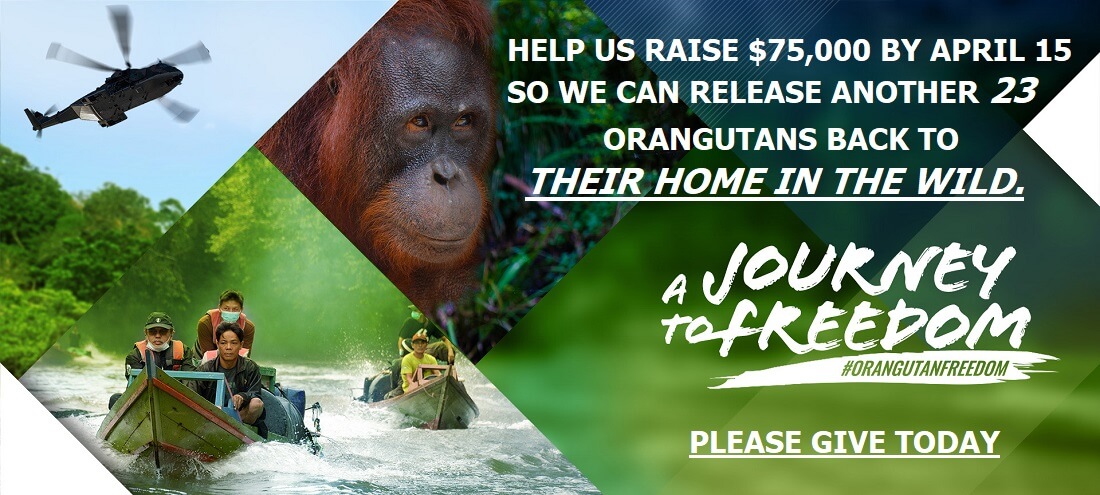FOREST SCHOOLS – MUCH MORE THAN JUNGLE CLASSROOMS

Have you ever wondered how our forest schools resemble orangutans’ natural habitats? Let’s peek in and see!
Sri Rahayu, BOS Foundation’s Surrogate Mother Coordinator at our Nyaru Menteng centre, and her fellow babysitters prepare for another wild day in the rainforest. It starts with bringing the eagerly waiting students to Forest School, which is more adventurous than it sounds.
The little ones climb in a wheelbarrow—the jungle school bus—while the older students walk by themselves, hand in hand with a babysitter, or they stubbornly refuse to walk, and the surrogate mothers have no choice but to pick them up and carry.
As the name implies, the jungle schools at our East and Central Kalimantan sanctuaries are in the middle of the Bornean rainforest; hence, walking from one place to another can be challenging. Therefore, we use boardwalks connecting the surrogate mothers’ building and orangutan sleeping enclosures to the jungle classrooms. Here, the students are separated according to age and skill level before the first lesson starts.
- The older students walk or get carried…
- …while the littlies take the school bus.
Dedicated multi-taskers
Sri and her team are vital to our conservation efforts. They are surrogate mothers, babysitters and jungle school teachers in one, ensuring our little orphans receive their daily dose of tender loving care while learning the essential survival skills their orangutan mothers sadly could never teach them.
To properly prepare the students for life in the wild, our jungle schools must mimic orangutans’ natural habitat as closely as possible: Tall trees and dense canopies are perfect for swinging, foraging, and building nests. Small creeks are popular spots for drinking, splashing, and cooling off, and plenty of other wildlife on the school grounds is important for learning how to avoid danger and survive in the wild.
The stakes are high, and the lesson can drain the little students’ energy. For example, if a nest just doesn’t want to look and feel like one despite putting so much work into folding and arranging branches, it is time for a desperately needed break.
- In nature’s classroom, the orphans learn vital survival skills.
- After school, it’s all about having fun at the playground.
Tall platforms mimic trees
Siri and her team are prepared to empty baskets full of different fruits onto specially designed feeding platforms. These are tall enough to make the orangutans put effort into climbing onto them to grab and eat the food, but still low enough for our surrogate mothers to reach. This activity is crucial for the students to identify high places as their food source since climbing trees to eat is their natural habit.
In the late afternoon, the orangutan trek—with even more tired students choosing a piggyback ride—heads back to the sanctuary to enjoy some playtime before bed. The playground allows the students to explore, socialise, solve puzzles for food rewards, and simply have a good time together.
While some surrogate mothers play around with the orangutans, others prepare the sleeping enclosures by installing tree leaves onto the rubber swings. As with the feeding platforms, the sleeping enclosures mimic a boreal life in the wild. They are tall to stimulate the orangutans to get used to sleeping on high grounds. And they are safe and secure, so the students get their well-deserved rest – before another day of Forest School begins.










